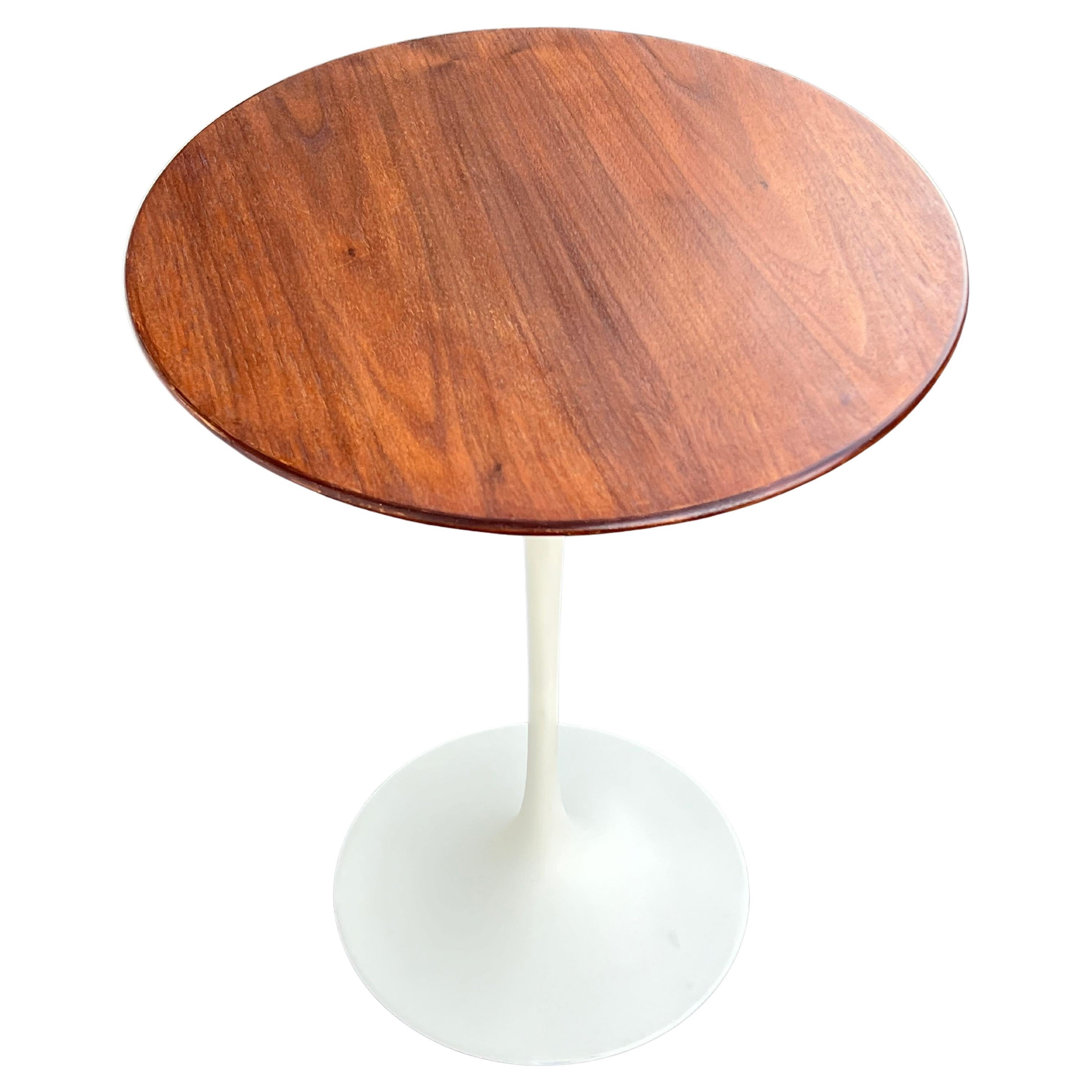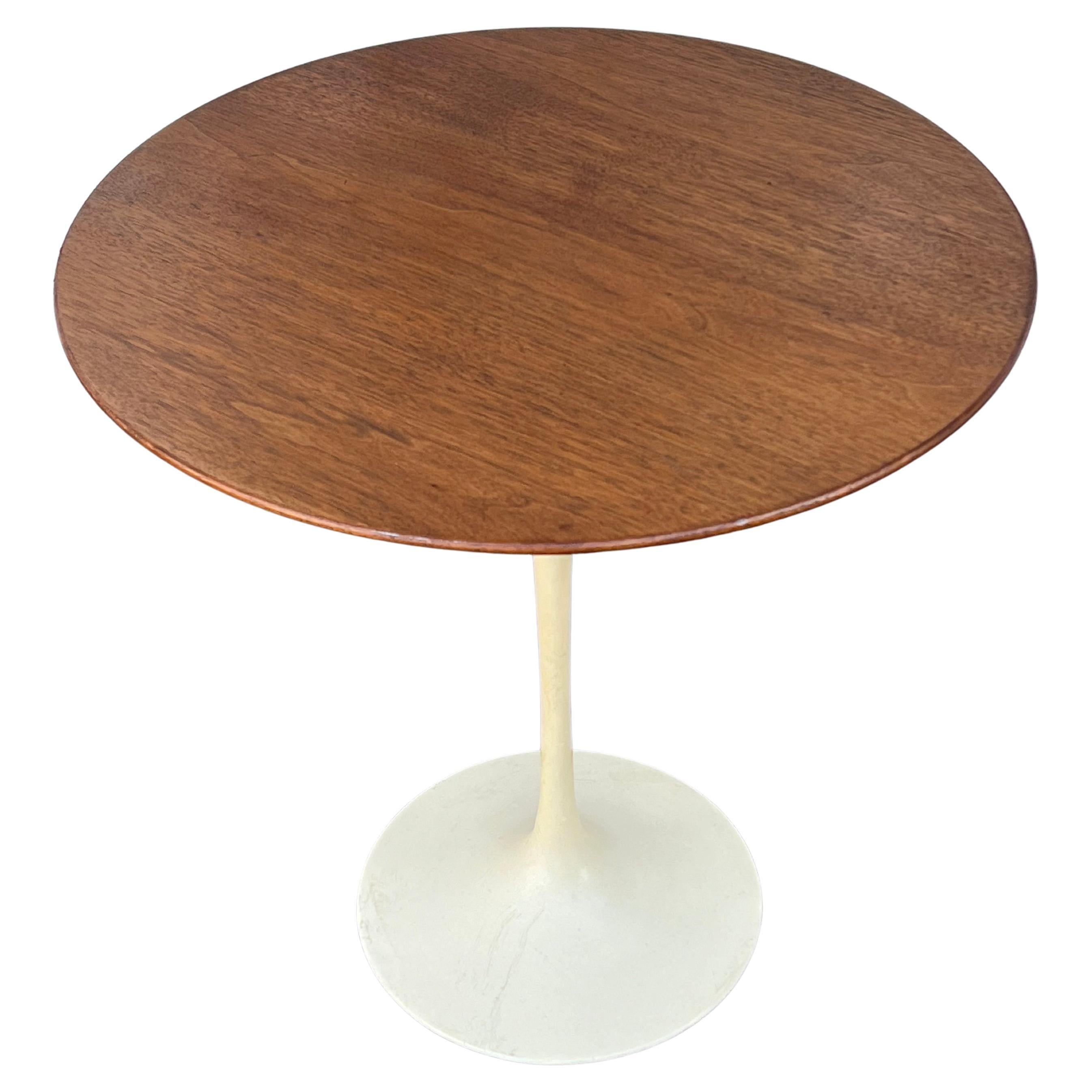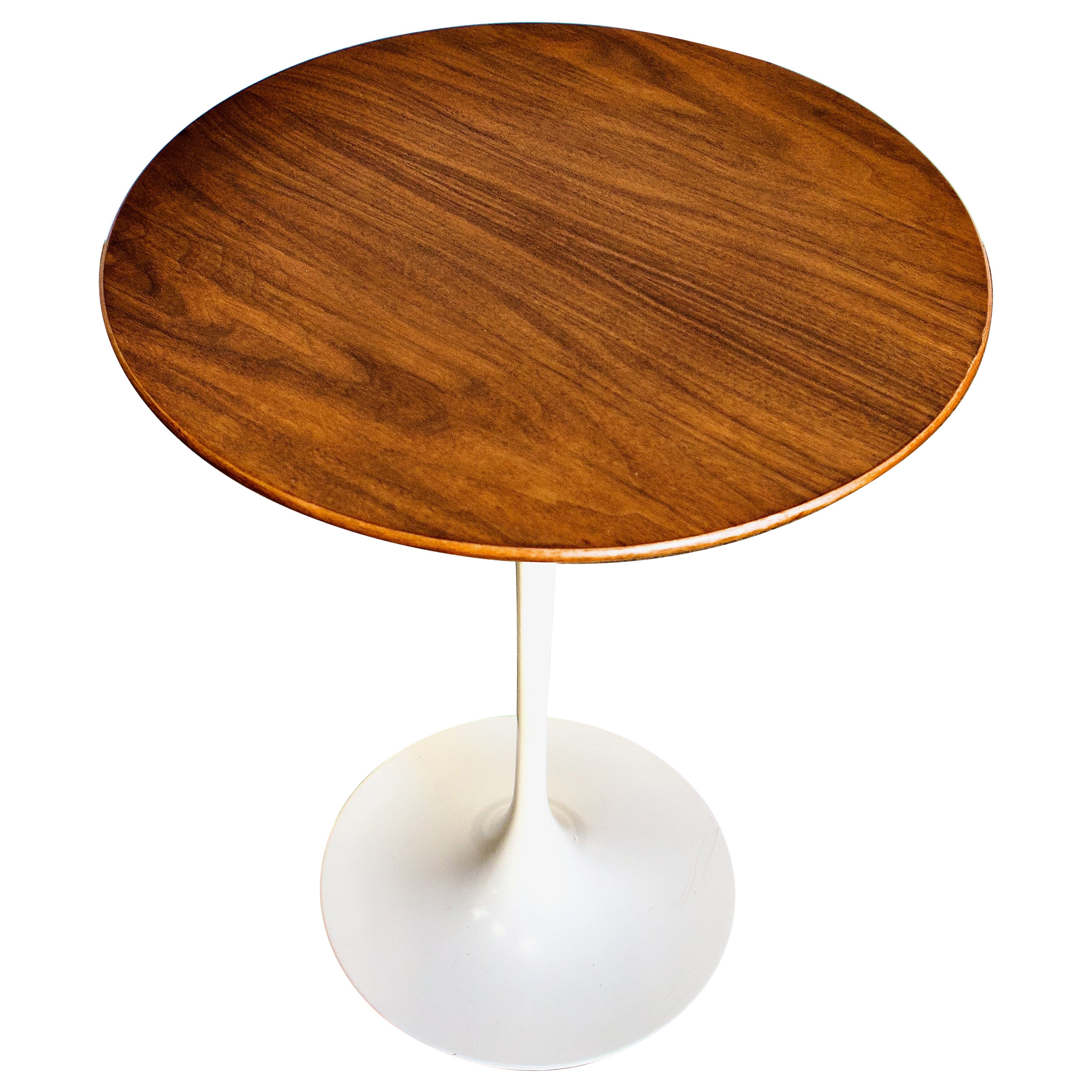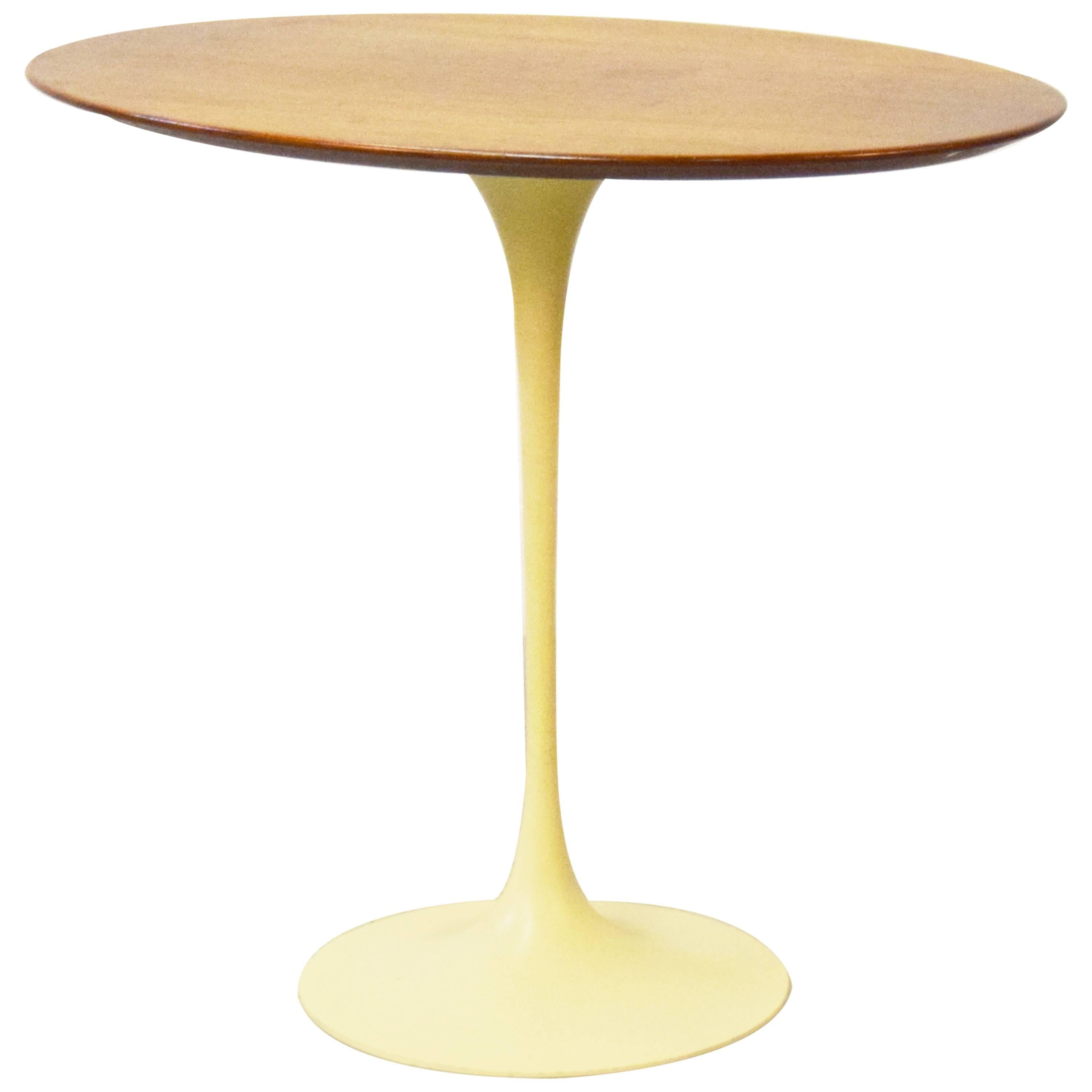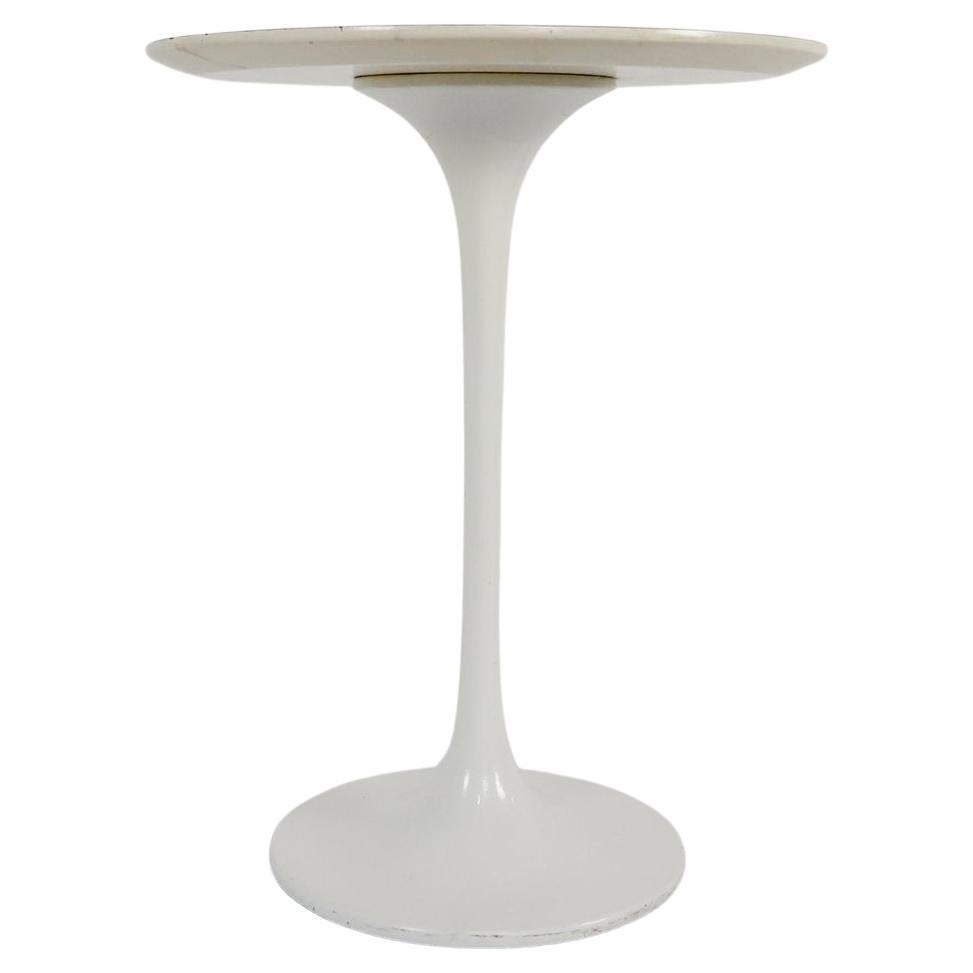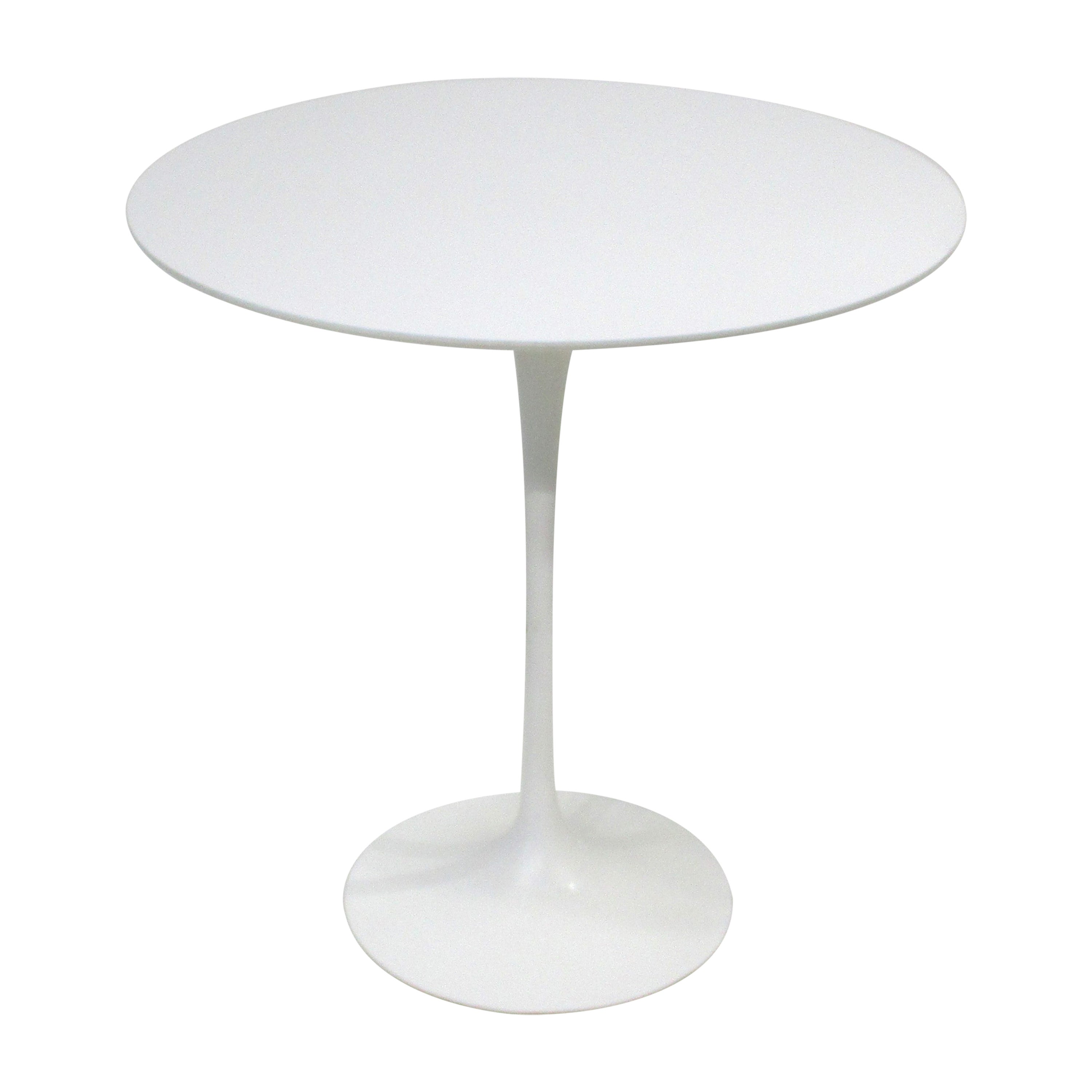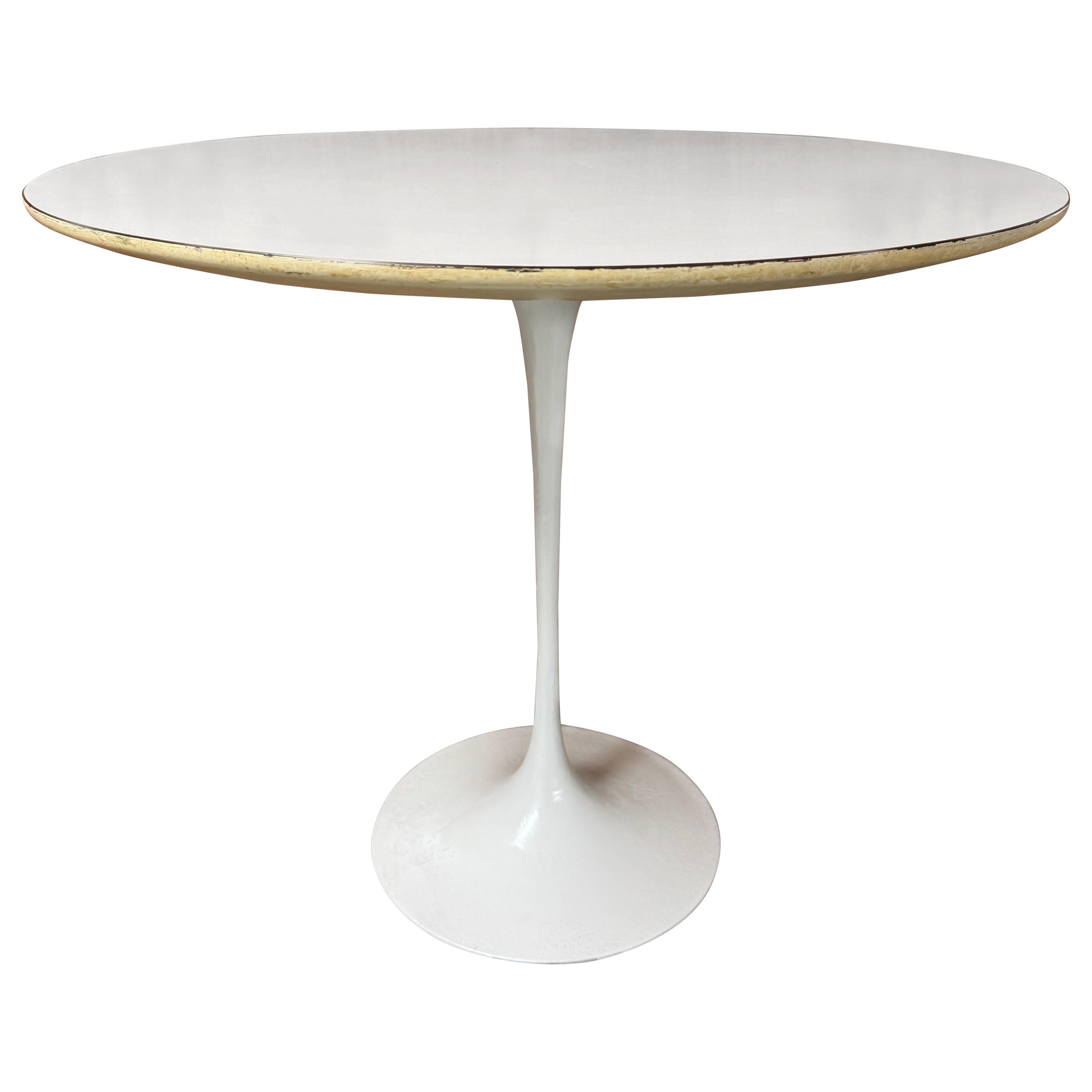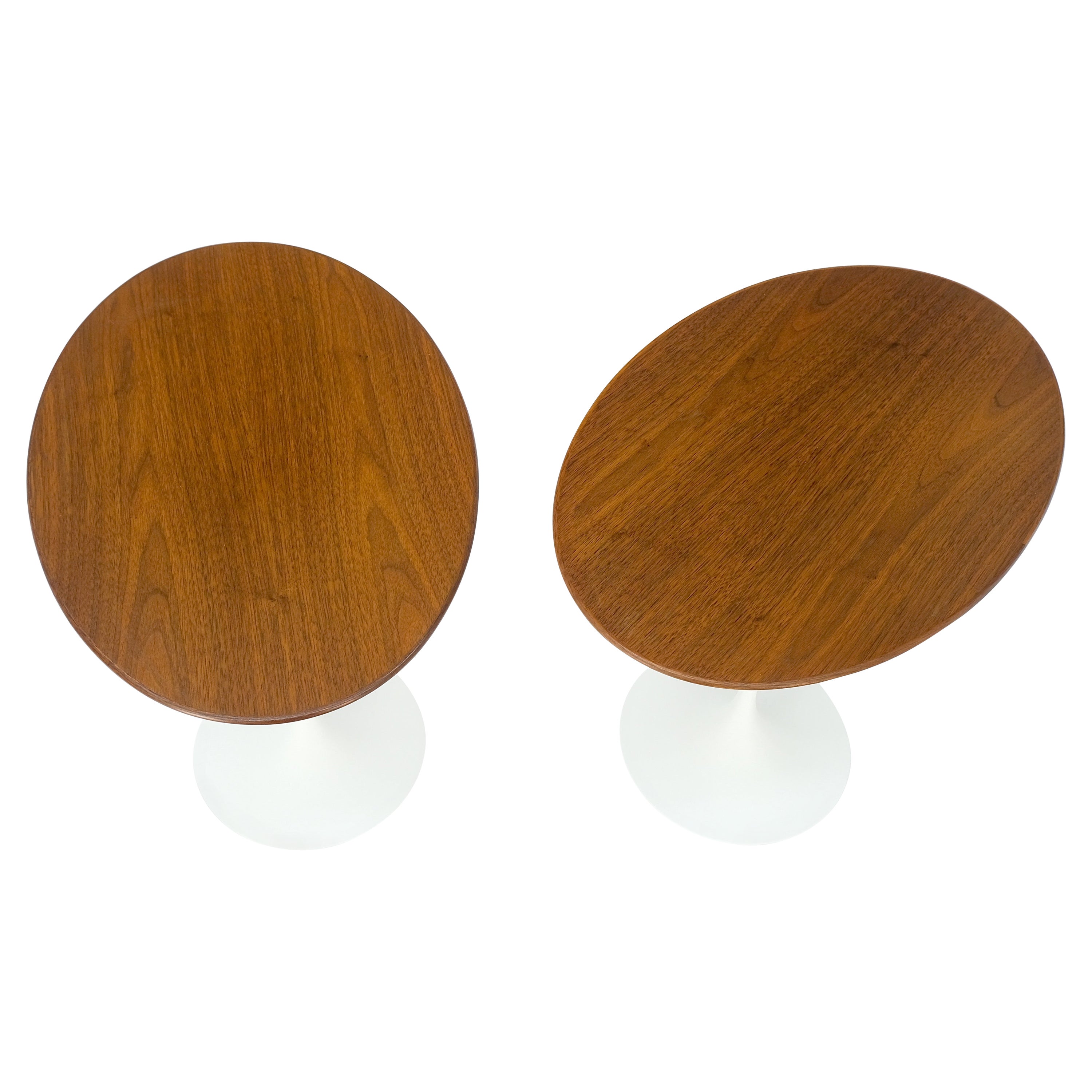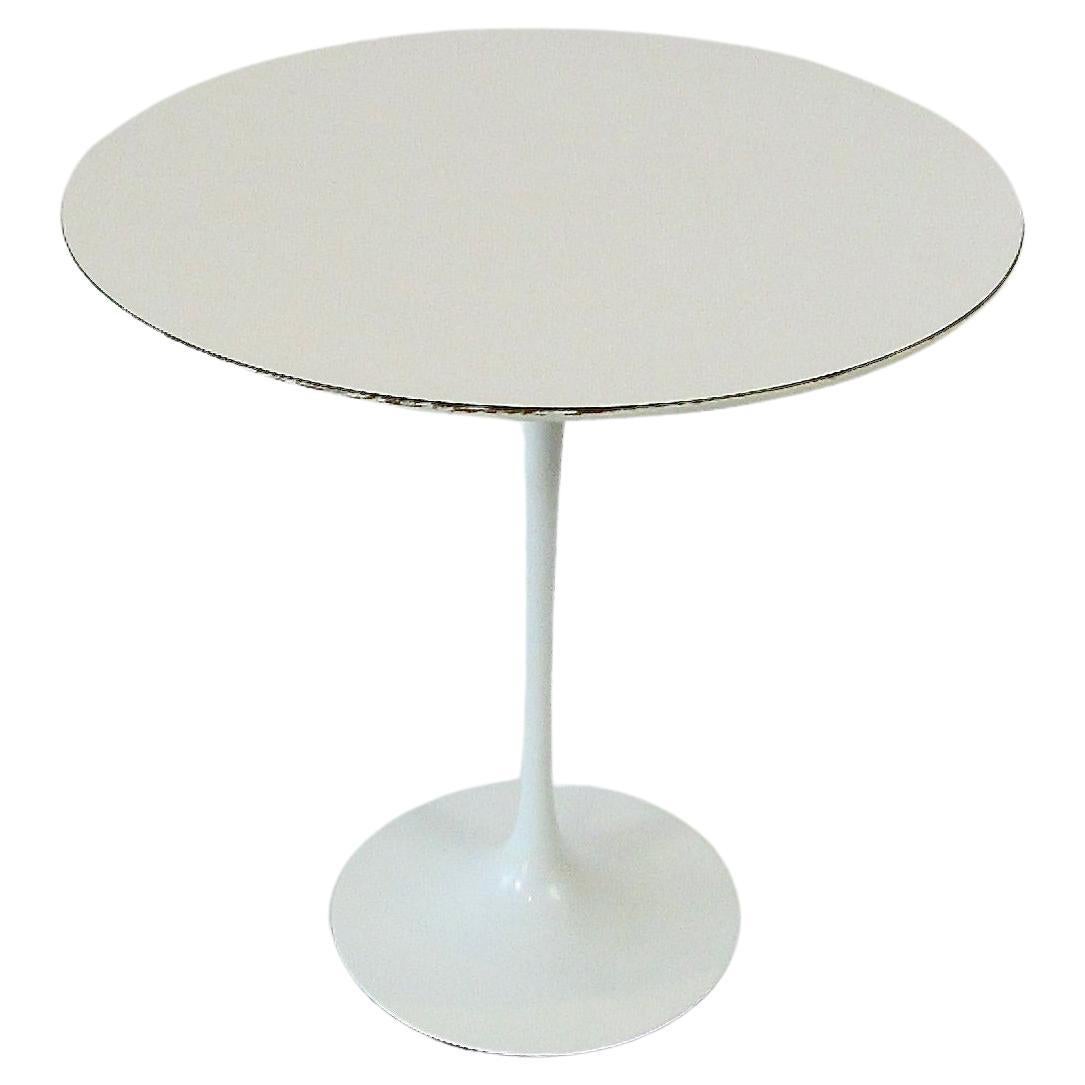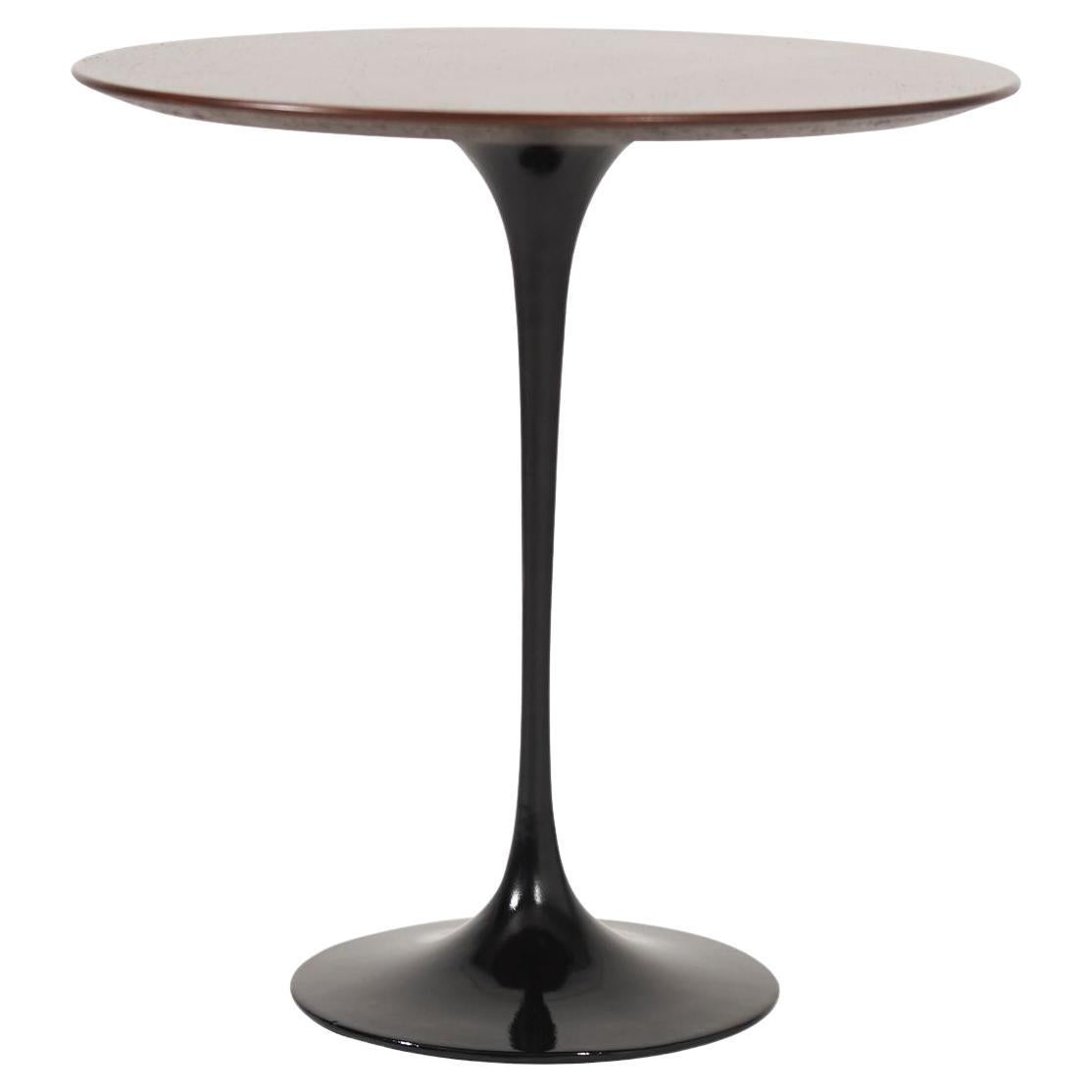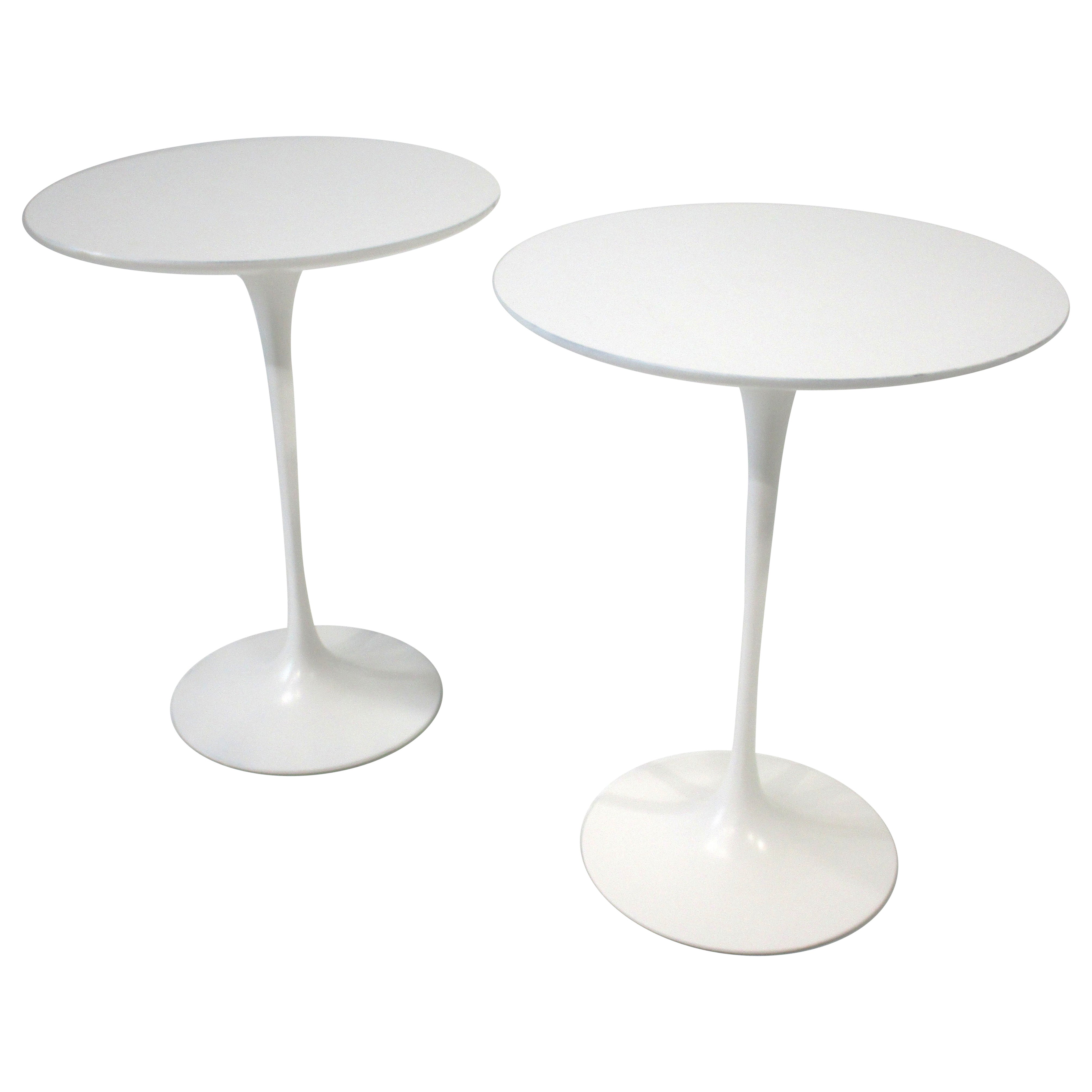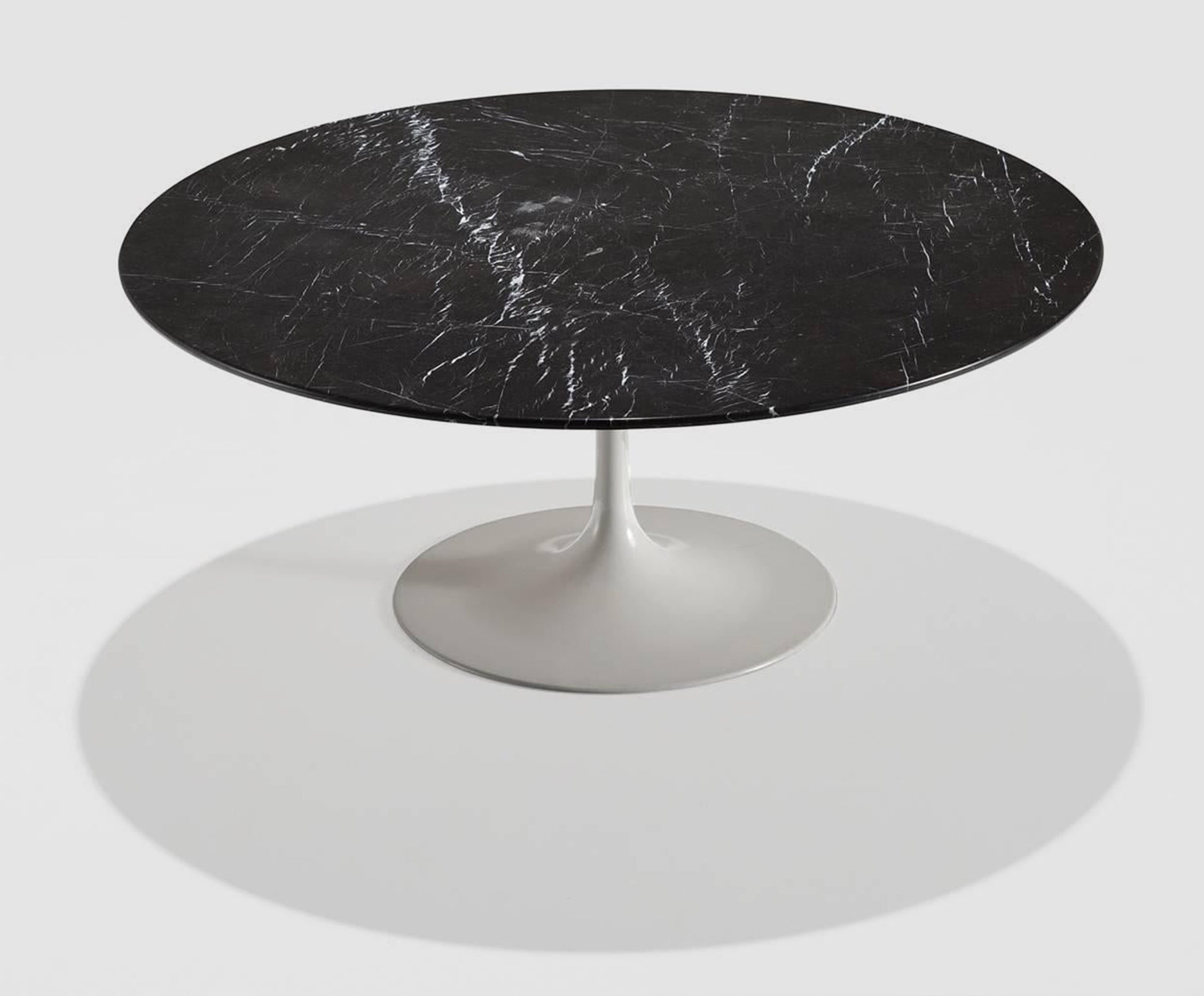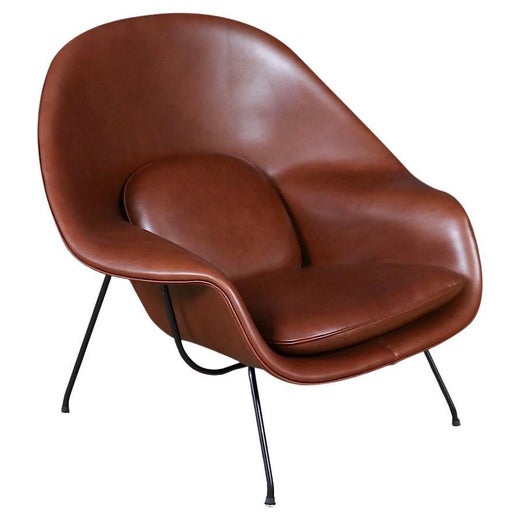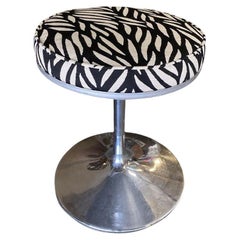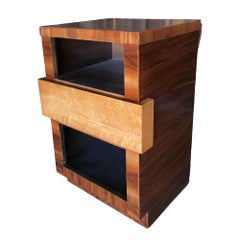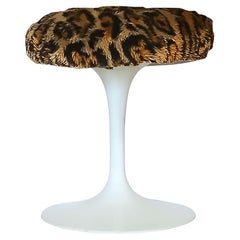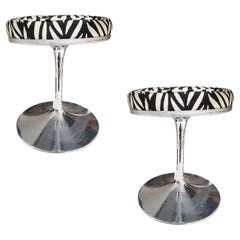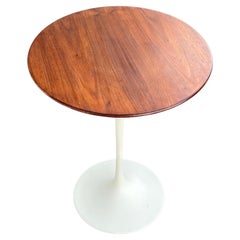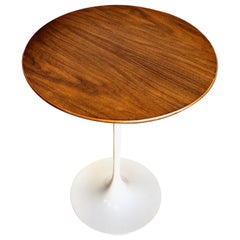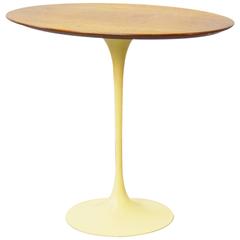
Eero Saarinen "Tulip" Side Table for Knoll, Pair
View Similar Items
Eero Saarinen "Tulip" Side Table for Knoll, Pair
About the Item
- Creator:Knoll (Designer),Eero Saarinen (Maker)
- Design:Saarinen Pedestal TableSaarinen Pedestal Series
- Dimensions:Height: 21 in (53.34 cm)Diameter: 20 in (50.8 cm)
- Style:Mid-Century Modern (Of the Period)
- Materials and Techniques:
- Place of Origin:
- Period:
- Date of Manufacture:1956
- Condition:
- Seller Location:Van Nuys, CA
- Reference Number:1stDibs: LU947412439543
Pedestal Table
Finnish-American architect and furniture maker Eero Saarinen (1910–61) declared that he “wanted to clear up the slum of legs” crowded beneath tables. Enter his Pedestal collection, which Knoll launched in 1958. The collection included armchairs, stools and tables of various sizes all balanced on a single supporting leg.
Saarinen got his start in furniture as a student at Michigan’s Cranbrook Academy of Art, where his father, architect Eliel Saarinen, was director. Some of Eero’s earliest work was designing furniture for Kingswood, a Cranbrook school for girls that opened in 1931. The pieces included a table with four gathered legs in order to make room for both people and chairs’ legs.
At Cranbrook Academy, Saarinen met Florence Knoll, who would become a lifelong friend and professional partner, especially when she was leading the Knoll furniture company. He also met fellow designer Charles Eames, and — with support from Ray Eames — they created the molded plywood Organic chair, which placed first in the 1940 Organic Design in Home Furnishings competition organized by the Museum of Modern Art in New York. As with Saarinen’s future practice, the Organic chair was emblematic of a design approach that was informed by a consideration of the human body as well as the possibilities of new machine processes.
Although America’s involvement in World War II disrupted plans to manufacture the Organic chair, Saarinen continued to explore organic shapes in industrial design. His interest in using seamless plastic forms was clear with his Pedestal series, but the technology was not advanced enough for their stability. Instead, the Pedestal table and its accompanying Tulip armchairs and armless chairs comprised cast-aluminum bases. Each table, stool and chair was crafted with a single, tapered cylindrical leg that descends to a base that flares into a circle, giving the illusion of being one piece. Like his Gateway Arch in St. Louis, the series’ pieces appear to float, and although austere in silhouette, they reflect intense attention to engineering.
The Pedestal table was released with several additional options, including marble and wood veneer for its round and oval tops for dining, side and coffee tables. Because of their modest footprint on a room and streamlined design, these tables can harmonize with nearly any interior style. The design’s status as a mid-century modern classic has inspired numerous imitators, but Saarinen’s original Pedestal table — still manufactured by Knoll — maintains the grace and quality that distinguishes it from the rest.
Knoll
As a company that produced many of the most famous and iconic furniture designs of the 20th century, Knoll was a chief influence in the rise of modern design in the United States. Led by Florence Knoll, the firm would draw stellar talents such as Ludwig Mies van der Rohe and Eero Saarinen into its compass. Their work would help change the face of the American home and office.
The company was formed in 1938 by the German immigrant Hans Knoll. He first worked with his fellow ex-pat, the Danish designer Jens Risom, who created furniture with flowing lines made of wood. While Risom served in World War II, in 1943 Knoll met his future wife, Florence Schust. She had studied and worked with eminent emigré leaders of the Bauhaus, including Mies, Walter Gropius and Marcel Breuer. She won Knoll over with Bauhaus notions of industrial arts, and an aesthetic that featured flat and tubular metal frames and angular forms. When Hans died in a car crash in 1955, Florence Knoll was appointed head of the company. It was as much through her holistic approach to design — a core division of the firm was dedicated to planning office systems — as Knoll's mid-century modern furnishings themselves that she brought about the sleek and efficient transformation of the American workplace.
Today, classic Knoll furnishings remain staples of modern design collections and decor. A history of modern design is written in pieces such as the elegant Barcelona chair — created by Mies and Lilly Reich — Saarinen’s pedestal Tulip chair, Breuer’s tubular steel Wassily lounge chair and the grid-patterned Diamond chair by Harry Bertoia.
As you can see from the collection of these designs and other vintage Knoll dining chairs, sofas and tables on 1stDibs, this manufacturer's offerings have become timeless emblems of the progressive spirit and sleek sophistication of the best of modernism.
More From This Seller
View AllVintage 1960s Mid-Century Modern Stools
Steel, Chrome
Vintage 1940s American Streamlined Moderne End Tables
Mahogany
Vintage 1950s American Stools
Steel
Vintage 1950s American Stools
Steel
Vintage 1950s North American Mid-Century Modern Coffee and Cocktail Tables
Metal
Vintage 1950s American Mid-Century Modern Side Tables
Rattan, Mahogany
You May Also Like
Vintage 1960s American Mid-Century Modern Side Tables
Steel
Vintage 1970s American Mid-Century Modern Side Tables
Steel
Mid-20th Century German Mid-Century Modern Side Tables
Aluminum
20th Century American Mid-Century Modern Side Tables
Vintage 1960s Mexican Mid-Century Modern Side Tables
Aluminum
Mid-20th Century American Mid-Century Modern Side Tables
Metal
